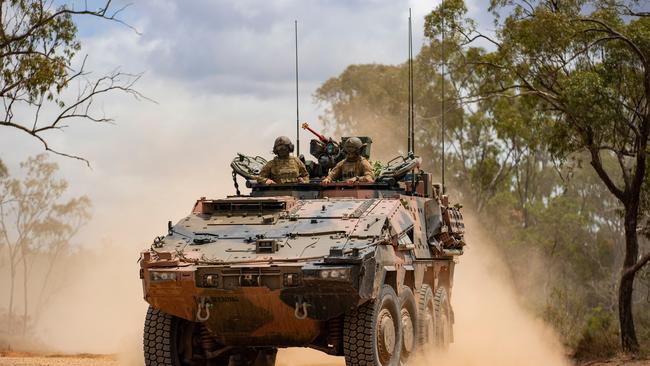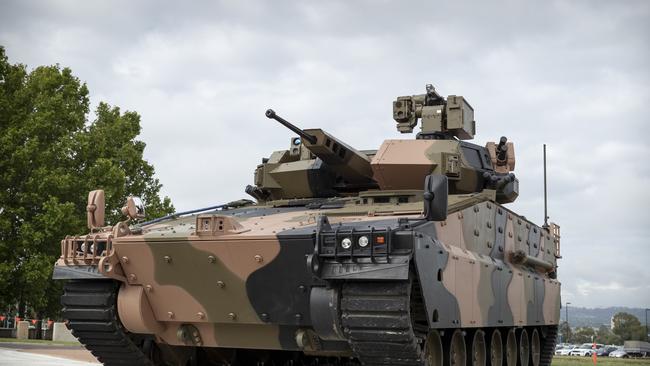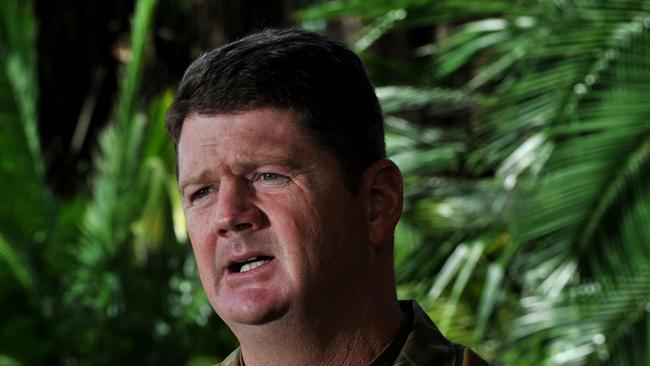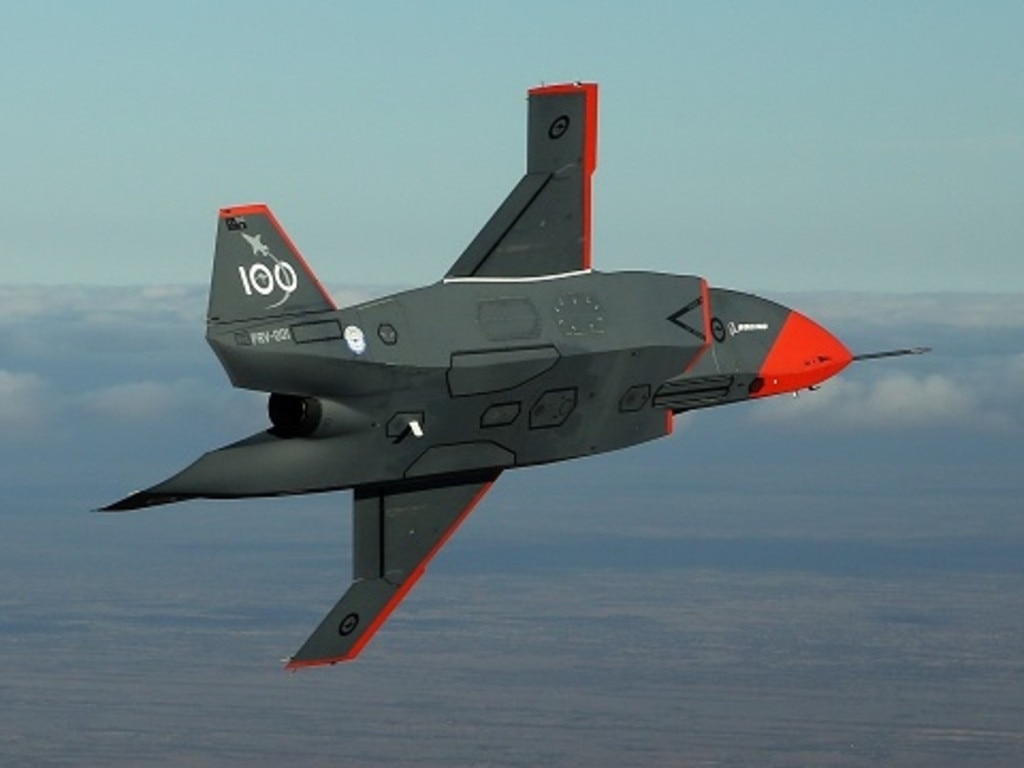Army’s vehicles ‘vulnerable’ to drone threat
The Army’s new $13bn armoured vehicle fleet will be vulnerable to killer drones without major upgrades to protect Australian personnel from the growing battlefield threat.

The army’s new $13bn armoured vehicle fleet will be vulnerable to killer drones, requiring major upgrades to protect Australian personnel from the growing battlefield threat.
The Australian can reveal that none of the service’s $5bn Boxer combat reconnaissance vehicles, its new $3bn fleet of Abrams tanks, or its $4.5bn infantry fighting vehicles, have been ordered with specialised counter-drone systems.
A Defence spokeswoman said: “All new Australian Army armoured vehicles will be fitted with appropriate systems to defend against hostile uncrewed aerial systems.”
Defence, however, has not specified counter-drone systems for the army’s 211 vehicle Boxer fleet that is currently being built, or its 75 new M1A2 main battle tanks on order from the US.
The army’s 129 Redback infantry fighting vehicles will be fitted with the Israeli-designed Iron Fist system active protection system when they are delivered, but the system was developed to destroy anti-armour missiles and rocket-propelled grenades rather than incoming drones.
Work is under way to adapt the technology as a “last resort” defence against unmanned aerial vehicles.

The uncertainty over the drone protection systems to be deployed on the army’s next generation vehicles comes despite the success of several Australian companies in bringing such products to market.
Australian company EOS has already exported its radar-guided Slinger anti-drone cannons to Ukraine, and recently announced a deal to supply the weapon to the German army for its light four-wheel drives.
Australia’s DroneShield also offers a range of electromagnetic drone jamming guns that are being sold in large numbers to foreign militaries but have so far been overlooked by Defence.
Former 1st Armoured Regiment commander Fergus McLachlan said the Australian Defence Force was “massively underdone” in air defence capabilities right across the services.
“If we had to deploy any of our three services today into a contested environment, the drone would be a very significant threat and I’m not sure we’re ready for it,” the retired major general said.
He said even the ADF’s most potent fighters, the F-35 Joint Strike Fighters, would be vulnerable to drone threats while they were on the ground.
“The air force has a desperate need to defend parked aircraft,” General McLachlan said.
“Imagine having your $200m JSF knocked out by a $2000 drone with a hand grenade on it.”

He said Defence’s failure to address the drone threat, and to purchase killer drones for the ADF, was “incredibly frustrating … I don’t actually blame the government on this; this is bureaucracy,” General McLachlan said.
“There is clearly a choke point in Defence, particularly in the policymaking areas, as to why we haven’t got armed drones and drone protection.”
His comments came as Defence Industry Minister Pat Conroy announced the government had signed $1.2m worth of contracts with 11 Australian companies to provide drone prototype that could be developed for future use by the ADF.
The companies included AMSL Aero, Autonomous Technology, Bask Aerospace, Boresight, Crystalaid Manufacture, DefendTex Military Products, Edinburgh Drone Company, Geodrones Australia, Ichor Autonomy, SYPAQ Systems and V-TOL Aerospace.
“Investments in developing small and smart uncrewed aerial systems will not only further a sovereign drone industry, creating highly skilled jobs, but ultimately will increase the operational effectiveness of our military,” Mr Conroy said.
But there was no timeline for any of the systems to be brought into service, or any sign of a long-term funding commitment.
Former army commanders Peter Leahy and Ian Langford warned in The Australian on Tuesday that the ADF was lagging well behind potential adversaries in acquiring lethal drones, and weapons to counter them.
Lieutenant General Leahy, a former chief of army, blamed the “dead hand” of the Defence bureaucracy and government indecision for the ADF’s inability to field lethal unmanned systems, which were even available to Yemen’s Houthi rebels.
The ADF has no lethal drones and is banking on two high-end systems – Boeing’s Ghost Bat and Anduril’s Ghost Shark – which may take years to become operational. Experts say Defence needs to dramatically widen its drone procurement plans to purchase low-cost expendable systems that can be deployed in large numbers.
Brigadier Langford, now a UNSW professor, said the ADF’s ability to deploy unmanned systems would mean the difference between victory and defeat in future conflicts, and the survival or loss of Australian personnel.
“Robotics and autonomous systems are today what tanks, aircraft carriers and fighter planes were in the 1930s,” he said.
“One only needs to see what has happened in Ukraine over the past two years to understand that.”








To join the conversation, please log in. Don't have an account? Register
Join the conversation, you are commenting as Logout